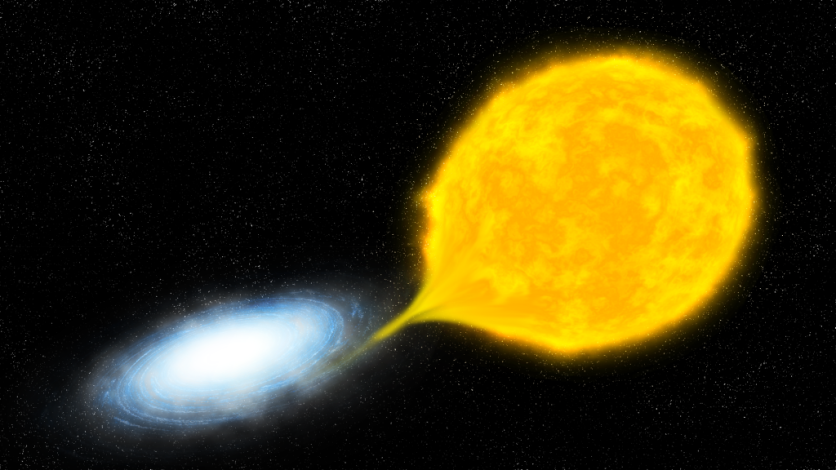NASA's Stratospheric Observatory for Infrared Astronomy (SOFIA) was used by astronomers to achieve a starry discovery: a new kind of stellar outburst that had never been observed in the system under study.
The astronomers were able to pinpoint the traits that set this outburst apart from others through a closer investigation, classifying it into a completely new category.

Cataclysmic Variable
A white dwarf, which is the dense remnant of a star in the last stages of its evolution, gathers material from a neighboring companion star that resembles the Sun in what is described as a classical nova, according to NASA's blog post.
The material that the white dwarf absorbs from the companion star piles up on its surface until severe pressures and densities lead to a nuclear explosion that expels the material from the white dwarf's surface.
This results in a brief, intense burst of light that might linger for weeks, months, or even years. The two stars are collectively referred to as a cataclysmic variable.
A dwarf nova, on the other hand, occurs in the same type of system as a classical nova, but for a different condition. NASA said that this kind of nova develops when the white dwarf's disc becomes unstable, resulting in an outburst that is considerably less intense and brilliant than a typical nova.
Even though they only last a few days, these outbursts occur more frequently.
The white dwarf and its companion, V1047 Cen, which is the cataclysmic variable SOFIA observed, exploded as a classical nova in 2005. (Nova Centauri 2005). But in April 2019, 14 years after, the system gradually began to brighten.
A crucial indicator of what's happening in the system is often the gas temperature of about V1047 Cen. In this instance, the scientists used the SOFIA spectra to determine the temperature, which revealed heating as a result of the outburst.
The astronomers found that it was more than just a typical dwarf nova. They came up with an alternative explanation for this odd occurrence because it had characteristics that were incompatible with both classical novae and dwarf novae.
A New Stellar Outburst is Born
The group saw the majority of the 400-day event at V1047 Cen using nearly a dozen other sensors. Together, the information began to make more sense, and they realized they had discovered something special: a new kind of stellar outburst that had never been observed in a system of this kind.
The study reveals novel possibilities for these kinds of cataclysmic variables.
"It's definitely not a classical nova, but definitely something more than a dwarf nova. It's something in between, and likely a combination of different processes or outbursts," the team leader Dr. Elias Aydi, an astronomer at Michigan State University, said in NASA's blog post.
Understanding what caused this outburst will help astronomers understand V1047 Cen and perhaps other unusual outbursts that may be found in the future.
Finding the speed at which the white dwarf and its Sun-like partner are orbiting their center of mass will be one of the key phases, and this will require more observations, according to NASA.
This article is owned by Tech Times
Written by Joaquin Victor Tacla
ⓒ 2025 TECHTIMES.com All rights reserved. Do not reproduce without permission.




